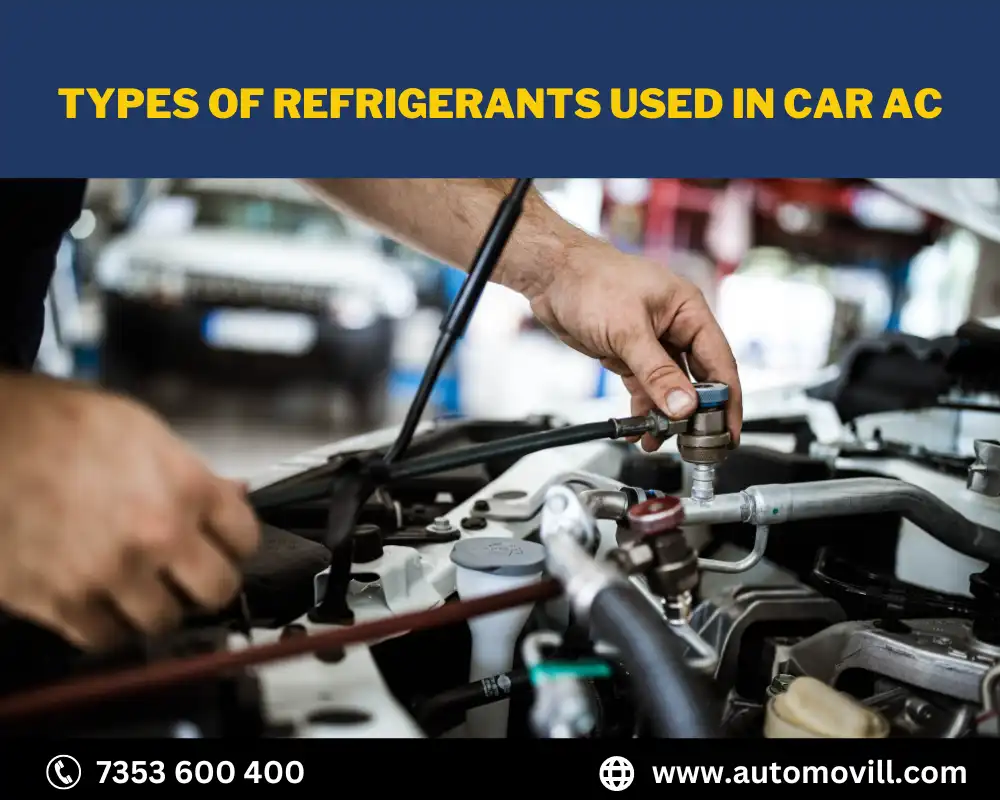
While going to an office or for a long drive on a scorching hot day, a well-functioning AC is must-have for a comfortable ride. Behind the scenes, one of the crucial components responsible for keeping your car cool from the inside is the refrigerant.
The role of refrigerants in an air conditioning (AC) system is to absorb the heat from inside the car and release it outside, which helps to create a cool and refreshing atmosphere inside the car.
In this blog post, we will talk about the various types of refrigerants that are used in car air conditioning systems. We will also discuss how these refrigerants affect our atmosphere and the environment.
Types of Refrigerants
Here we go:
1) R-12 (Freon)
R-12, commonly known as Freon, was one of the earliest refrigerants used in car air conditioning systems. But it was stopped use by car manufacturers as its production was halted in late 1990 due to its harmful effects on the ozone layer. Since then, automotive manufacturers have transitioned to more environmentally friendly alternatives.
2) R-134a
After the phase-out of R-12, R-134a emerged as the leading replacement refrigerant in car air conditioning systems. It has less impact on our environment, as it has a negligible effect on the ozone layer. R-134a is a hydrofluorocarbon (HFC) refrigerant and has become the industry standard for automotive air conditioning. It provides efficient cooling performance and is compatible with existing system components.
3) R-1234yf
To address the concern about global warming due to the use of HFCs (Hydrofluorocarbons), a new refrigerant known as R-1234yf has gained popularity. It is classified as a hydrofluoroolefin (HFO) and has a significantly lower global warming potential compared to R-134a.
R-1234yf is gradually being adopted by many car manufacturers as a more sustainable alternative, though it may require system modifications due to its different properties.
4) CO2 (R-744)
Carbon dioxide, often known as R-744, is a natural refrigerant that is gaining popularity in the automotive sector. It is a non-toxic and non-flammable choice with very minimal potential for global warming.
Although it requires higher operating pressures than traditional refrigerants, the use of CO2 is considered more environmentally friendly. However, due to technical challenges and higher costs, its adoption is currently limited to a few manufacturers.
5) R-152a
R-152a, also known as difluoroethane, is another alternative refrigerant used in car air conditioning systems. It has a low global warming potential and is not considered an ozone-depleting substance. However, its flammability poses safety concerns, making it less favored compared to other options.
Industry Trends and Regulations
In recent years, there has been a global shift toward more sustainable refrigerants driven by environmental concerns and stricter regulations. Many countries have implemented regulations and targets to phase out high-global-warming potential refrigerants, encouraging the adoption of low-GWP alternatives. For example, the European Union’s MAC Directive sets limits on the GWP of refrigerants used in automotive air conditioning systems.
To meet these requirements, car manufacturers are investing in research and development to explore new refrigerant options. The focus is on finding different alternatives to refrigerants currently being used that strike a balance between performance, safety, cost-effectiveness, and environmental impact.
Future trends may include the adoption of HFO blends, further advancements in CO2 systems, and the exploration of new refrigerants with even lower GWP.
Refrigerant Maintenance
Your car’s AC service should be done regularly to ensure that it is functioning properly. This includes checking the refrigerant levels and adding refrigerant as needed.
If your car’s air conditioning system is not working properly, it could be a sign that there is a Freon leakage in the system. If you notice a leak, unusual sound, or warm air, you should take your car to a workshop to get the AC system inspected by a skilled mechanic.
Conclusion
As environmental concerns continue to shape the automotive industry, the types of refrigerants used in car air conditioning systems are evolving. R-134a has been the dominant refrigerant since the phase-out of R-12, but R-1234yf and CO2 (R-744) are emerging as sustainable alternatives.
The industry is actively exploring new refrigerants with lower global warming potential to comply with regulations and reduce their environmental footprint.
As a car owner and responsible citizen, it’s important to stay informed about these developments to make eco-friendly choices and enjoy a comfortable ride while minimizing environmental impact.
